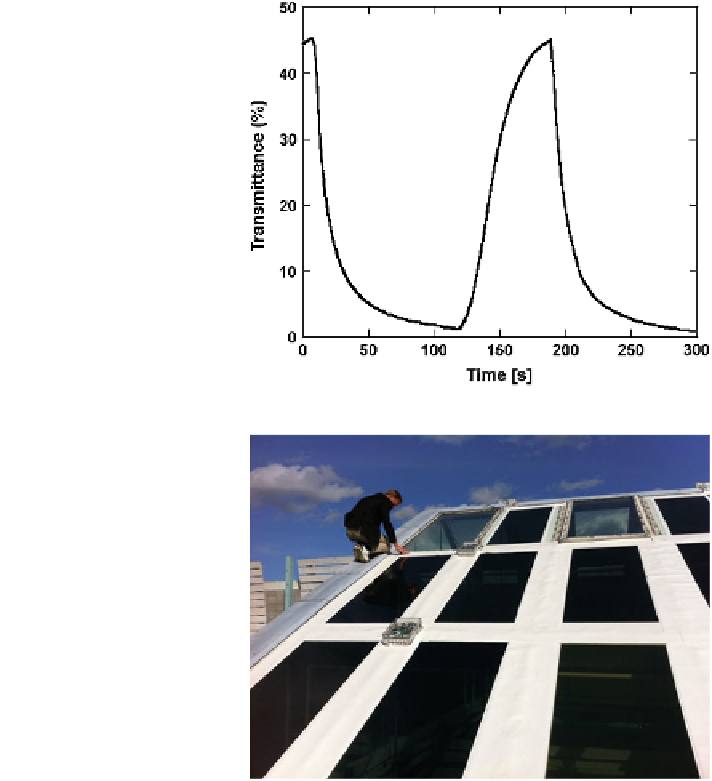Civil Engineering Reference
In-Depth Information
Fig. 16 Mid-luminous
transmittance dynamics for
two superimposed
electrochromic foils of the
type described in Fig.
14
.
From Granqvist (
2008a
)
Fig. 17 Test installation of a
foil-based electrochromic
glazing on a skylight used in
a supermarket in Uppsala,
Sweden, during 2012-2013.
From Gregard (
2012
)
advantages. Devices based on Ni-Mg hydride have been investigated in particular
detail by Tajima et al. (
2010
). The results presented so far have shown that the
hydride-based devices suffer from limitations in longevity, modulation span, and
high-temperature durability (Tajima et al.
2011
).
Among the other approaches to electrochromic glazings, it is natural to first
consider the suspended particle devices (SPDs) which have a venerable history
going back to ''light valves'' introduced in the 1930s and described in a long series of
patent specifications (Marks
1969
). The SPD comprises a polymer layer, with a large
number of light-absorbing and polarizable particles, between sheets of glass or
plastic coated with transparent electrically conducting films facing the polymer
layer. The particles should be less than *100 nm in size in order not to exhibit
strong light scattering. They typically consist of polyiodides or, more generally,

